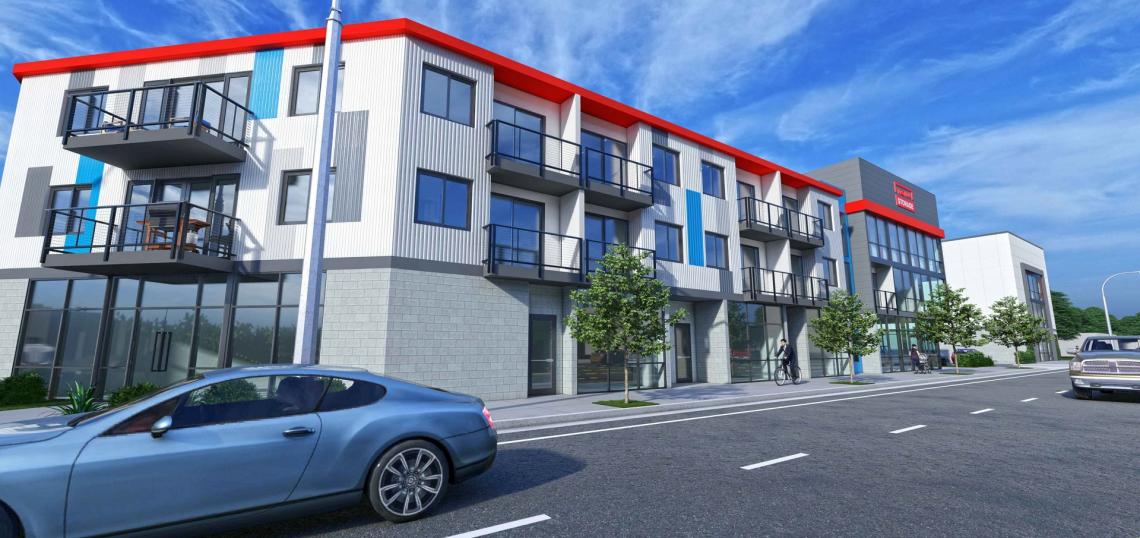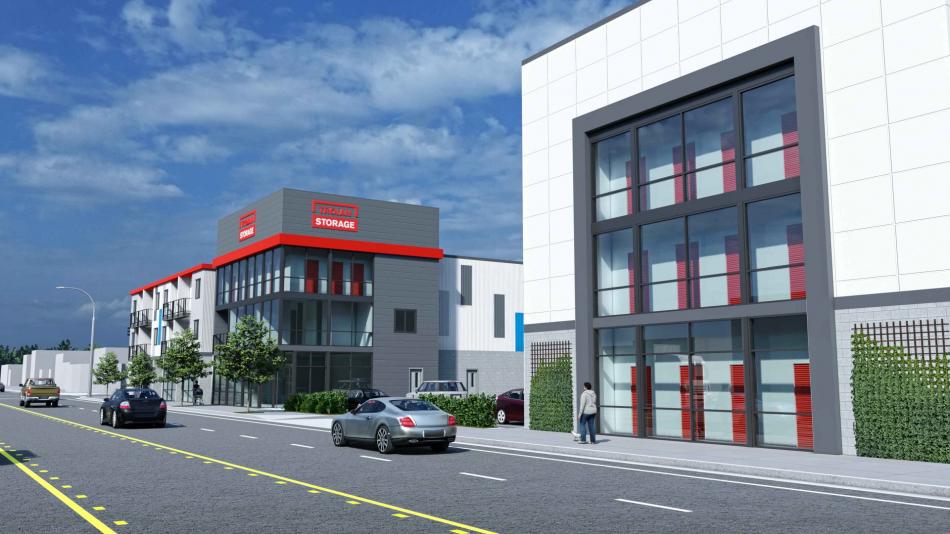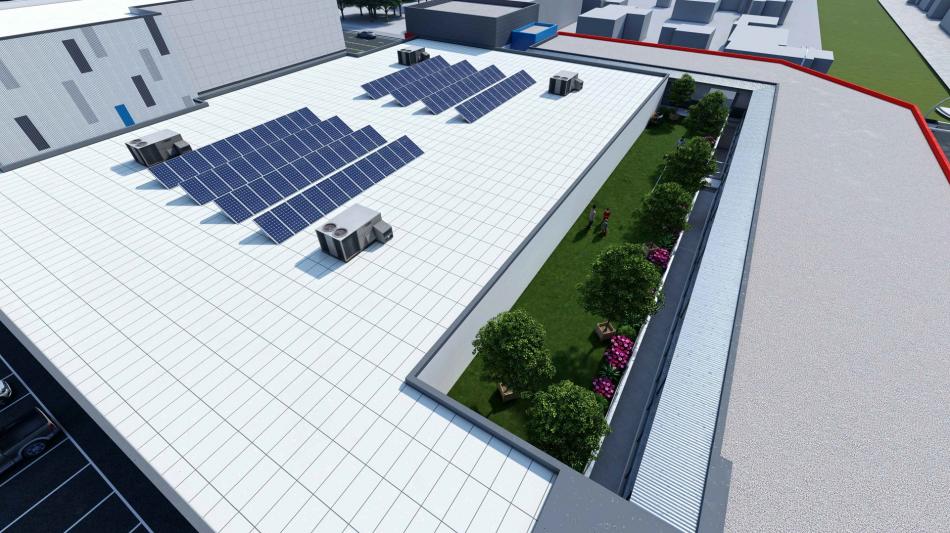With blank street walls and a dearth of occupants save for excess stuff, storage facilities are sometimes viewed as a detriment to the built environment. But like its vehicular-oriented cousin the parking garage, which can be masked with residential units or other occupiable spaces, folding other uses into a storage complex can soften the blow. One development firm is trying this tactic in the far northeast corner of the San Fernando Valley.
Last week, Redondo Beach-based Trojan Storage submitted an application to the Los Angeles Department of City Planning seeking entitlements for the construction of a nearly 200,000-square-foot development at 13260 W. Maclay Street in Sylmar. The project, which would replace a 22-unit apartment complex, is expected to include roughly 150,000 square feet of storage units within two low-rise buildings - but also, 27 new apartments. Plans call a mix of one- and two-bedroom dwellings, all of which are to be rented at market rate.
Designed by San Clemente-based Jordan Architects, the proposed Trojan Sylmar development would consist of a four-story standalone storage building and a three-story structure combining housing and storage space under a single roof. The new construction would be separated by surface parking, with plans calling for a total of 78 spaces located on the exterior and on the ground floor of the new buildings.
Housing would wrap the exterior of the site - a corner lot at Maclay's intersection with Bromont Avenue. Architectural plans depict the project as a contemporary low-rise development, with artist studios, a lobby, and a recreation room activating the streetscape, and additional open space provided in an interior courtyard.
While the bulk of storage facilities in Los Angeles are of the single-use variety, there are voices within the industry who advocate for folding "new urbanism" elements into storage developments.
"Incorporating open space—a key principle of new urbanism—can be difficult, but it’s also an opportunity to engage customers in nontraditional ways and foster a sense of community," wrote Josephine Hart of Storage Development Partners LLC in Inside Self Storage, describing one of her projects. In our case, we added an outdoor dining facility to accommodate a potential restaurant, and an outdoor pedestrian plaza that would allow people to stop and relax. It’ll be heavily and beautifully landscaped with bike racks and public art—a sure way to turn objections about self-storage into positives. Clearly, it took away buildable square footage and added cost to the project, but we feel these elements will pay dividends in the end."
- Sylmar (Urbanize LA)









